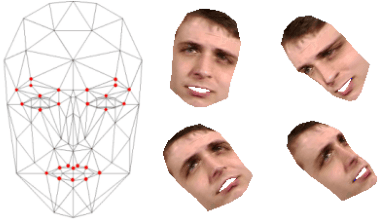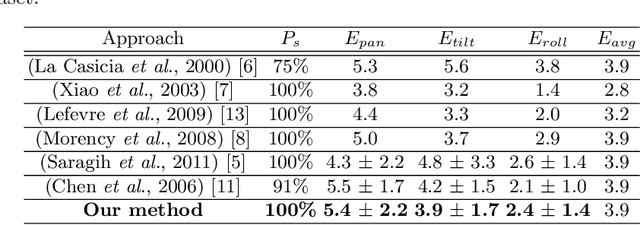Maurice Charbit
TSP
Last layer state space model for representation learning and uncertainty quantification
Jul 04, 2023Abstract:As sequential neural architectures become deeper and more complex, uncertainty estimation is more and more challenging. Efforts in quantifying uncertainty often rely on specific training procedures, and bear additional computational costs due to the dimensionality of such models. In this paper, we propose to decompose a classification or regression task in two steps: a representation learning stage to learn low-dimensional states, and a state space model for uncertainty estimation. This approach allows to separate representation learning and design of generative models. We demonstrate how predictive distributions can be estimated on top of an existing and trained neural network, by adding a state space-based last layer whose parameters are estimated with Sequential Monte Carlo methods. We apply our proposed methodology to the hourly estimation of Electricity Transformer Oil temperature, a publicly benchmarked dataset. Our model accounts for the noisy data structure, due to unknown or unavailable variables, and is able to provide confidence intervals on predictions.
Variational Latent Discrete Representation for Time Series Modelling
Jun 28, 2023Abstract:Discrete latent space models have recently achieved performance on par with their continuous counterparts in deep variational inference. While they still face various implementation challenges, these models offer the opportunity for a better interpretation of latent spaces, as well as a more direct representation of naturally discrete phenomena. Most recent approaches propose to train separately very high-dimensional prior models on the discrete latent data which is a challenging task on its own. In this paper, we introduce a latent data model where the discrete state is a Markov chain, which allows fast end-to-end training. The performance of our generative model is assessed on a building management dataset and on the publicly available Electricity Transformer Dataset.
End-to-end deep metamodeling to calibrate and optimize energy loads
Jun 19, 2020



Abstract:In this paper, we propose a new end-to-end methodology to optimize the energy performance and the comfort, air quality and hygiene of large buildings. A metamodel based on a Transformer network is introduced and trained using a dataset sampled with a simulation program. Then, a few physical parameters and the building management system settings of this metamodel are calibrated using the CMA-ES optimization algorithm and real data obtained from sensors. Finally, the optimal settings to minimize the energy loads while maintaining a target thermal comfort and air quality are obtained using a multi-objective optimization procedure. The numerical experiments illustrate how this metamodel ensures a significant gain in energy efficiency while being computationally much more appealing than models requiring a huge number of physical parameters to be estimated.
3D Face Pose and Animation Tracking via Eigen-Decomposition based Bayesian Approach
Aug 29, 2019



Abstract:This paper presents a new method to track both the face pose and the face animation with a monocular camera. The approach is based on the 3D face model CANDIDE and on the SIFT (Scale Invariant Feature Transform) descriptors, extracted around a few given landmarks (26 selected vertices of CANDIDE model) with a Bayesian approach. The training phase is performed on a synthetic database generated from the first video frame. At each current frame, the face pose and animation parameters are estimated via a Bayesian approach, with a Gaussian prior and a Gaussian likelihood function whose the mean and the covariance matrix eigenvalues are updated from the previous frame using eigen decomposition. Numerical results on pose estimation and landmark locations are reported using the Boston University Face Tracking (BUFT) database and Talking Face video. They show that our approach, compared to six other published algorithms, provides a very good compromise and presents a promising perspective due to the good results in terms of landmark localization.
 Add to Chrome
Add to Chrome Add to Firefox
Add to Firefox Add to Edge
Add to Edge